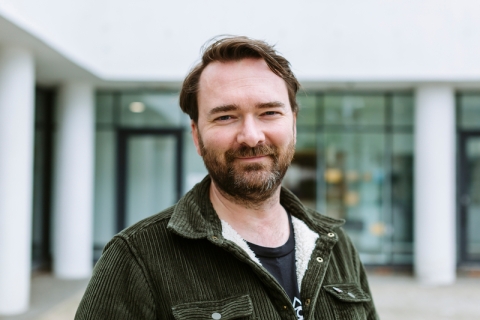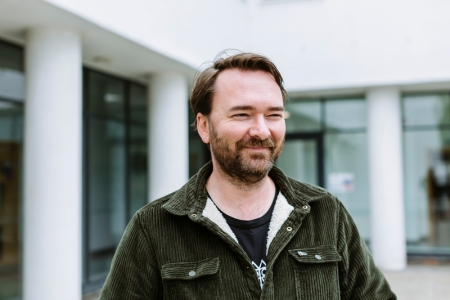

Sam’s MA Conservation Architecture Master’s helped him explore his passion for conservation architecture and inspire his future research
3 min read
After almost 20 years experience in the Architecture industry, I felt I'd got as far as I could go in the industry without an academic foundation. I chose to do a postgraduate degree to complement the practical knowledge I'd gained in the workplace and find work in specialised fields in my industry.
I chose to study an MA in Conservation Architecture because my career in architecture has tended towards historic buildings and this is the area I find most interesting.
Inspired by Portsmouth's architecture
I chose Portsmouth because the University is local to my home and workplace and my knowledge of the historic local area is relevant to the field of study.
In my career I've enjoyed working on many of the Victorian fortifications in and around Portsmouth such as Forts Gilkicker, Brockhurst and Widley, and all four of the Solent sea forts. Fort Cumberland in particular was and continues to be a significant part of my work, and was eventually a core element of my Masters coursework in Conservation Practice and Theory.
Balancing work and study
Before applying for my Master's, I completed a HND in Building Studies at the local Highbury College. I informally contacted the School of Architecture detailing my past work, and, alongside my HND, I think this was the main factor in gaining a place on the Master's course.
As I live and work locally, budgeting for the course was manageable and I could continue to work part-time. I reduced my working hours to around two days a week but, with the support of my employers, this was flexible based on my uni workload.
I would highly recommend the School of Architecture, and the conservation architecture course in particular, for the knowledgeable teaching staff and balance between practical and theoretical learning. There were opportunities for site visits that were very productive in terms of the practical learning aspects of the course and the Eldon building is a very enjoyable environment to work in.

Studying in the School of Architecture was a very positive experience, and has made me enthusiastic about returning as a PhD student.
Sam Brooks, MA Conservation Architecture
Welcoming new research opportunities
Since completing my course, I've returned to work in the field of conservation architecture. While the pandemic stopped my return to full time work and the taking on of new responsibilities/roles, I now intend to pursue a PhD as the course gave me the opportunity to do further work in academic contexts. I hope to be able to expand my knowledge by combining professional and academic experience with more personal research interests, specifically the fields of architectural phenomenology, urbanism and visual media to explore where modern culture meets heritage in the contemporary city, and how this relates to engagement with new technologies.
Studying in the School of Architecture was a very positive experience, and has made me enthusiastic about returning as a PhD student. The structured learning and facilities that the school provided and the many opportunities for engagement with the teaching staff have been a direct factor in my decision to return for further research.
